Woodworking is a timeless profession practiced by millions of people in the United States and Canada. Yet in our modern age, many woodworkers struggle to make a living with their craft. That’s because much of today’s modern furniture is mass produced and no longer composed of wood. Inexpensive kitchen cupboards and bathroom vanities are fabricated from particle board with hardwood veneers. The pieces are cut to length by robots and glued together on assembly lines.

But even in our machine-age some craftspeople are so skilled they can profit amazingly from their abilities regardless of market competition. The most creative handicrafters work their own hours in their own shops and create whatever their fertile minds can imagine, and whatever they can sell online. Other woodworkers produce gifts and knickknacks recreationally just to relax in the evenings after doing office work to pay the bills. And then there are the lucky few like me.
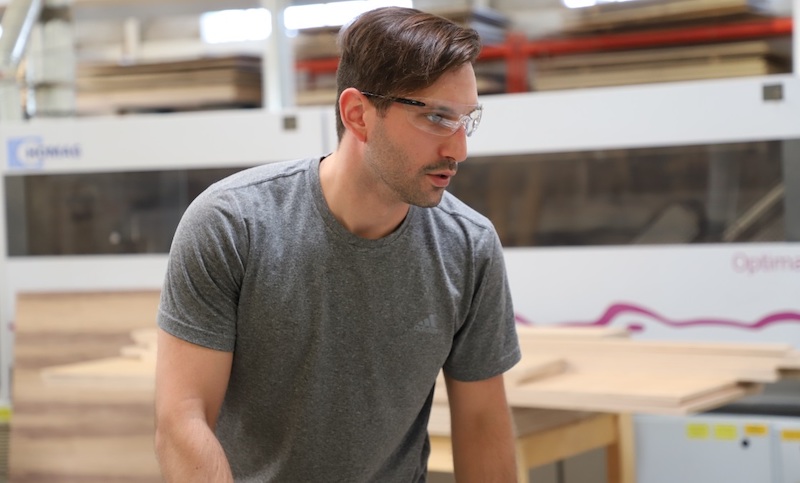
My name is Carlo and I get paid to handcraft wooden furniture out of hardwood in a wonderfully creative environment alongside other like-minded enthusiasts. I’m a professional woodworker employed in a well-appointed woodshop right here in the city, and I love my job.
Getting shift work in a furniture plant would not be my idea of a dream job; it’d be too repetitive. But instead I work at Rosehill Wine Cellars in Mississauga where we handcraft custom wooden wine racks which are designed to fit all different sized wine storage spaces in upscale homes and restaurants. It’s never the same job twice and each project usually requires some specially handcrafted pieces which need expert preparation. Believe it or not, it’s these difficult tasks which we most enjoy, and which make our days so interesting. The curveballs keep us sharp.
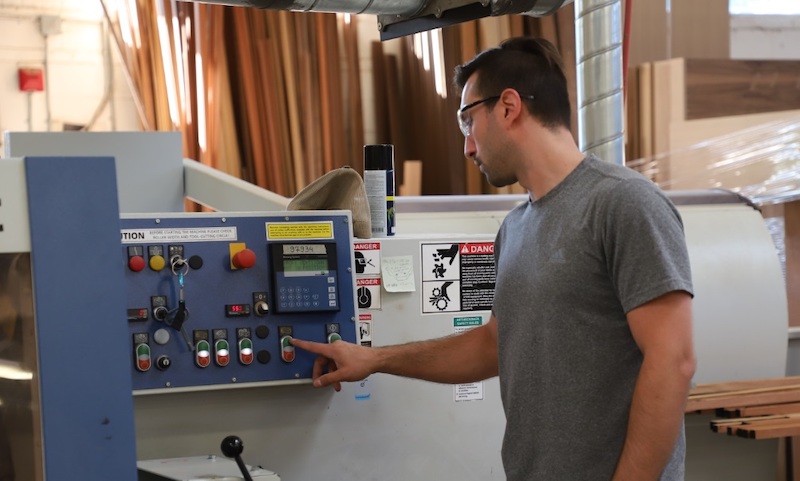
I’m a born woodworker. My dad managed field operations for a major lumber company, and I grew up in timber yards in northern Ontario. I started doing this job while still in my early twenties. I was stacking slabs outside in the rain when my supervisor asked if I’d accept a raise in pay to work inside as a saw filer. A saw filer is someone responsible for sharpening saws, performing machine alignment, and providing preventative maintenance. The lumberyard sent me to Rosehill eight years ago. A lot has changed since then and now we use computers and other sophisticated electronic equipment to monitor our machines, realign lasers and generally maintain our saws to the highest possible standards. I said yes to the new assignment and have no regrets because the work never gets old; I learn something new every single day.
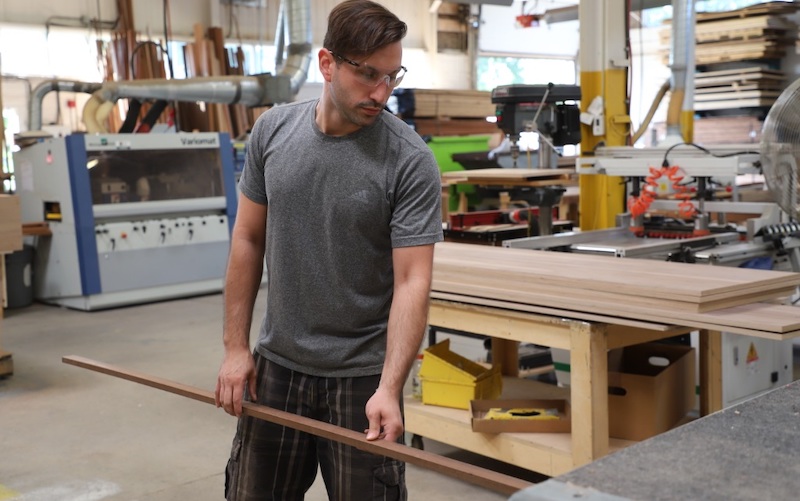
Every member of the Rosehill team has a different job. We gravitate to the tasks we most enjoy and which we believe we perform better than others. Because of my upper body strength and my expertise handling timber, I’ve become the primary lumber processing person. I’m the guy who unloads the trucks and selects the boards in our storage area to make the first cuts. Inside Rosehill’s wood shop, we have specialized saws which reduce time and effort. Our professional grade tools are easier, more precise, and safer than what’s available to everyday consumers. The reason why such good equipment is rare is because it’s expensive. Our gang-ripper table saw was made in Italy and automatically feeds single boards through multiple saw blades. The machine cuts hardwood into several pieces simultaneously and uses lasers to maintain straight lines.
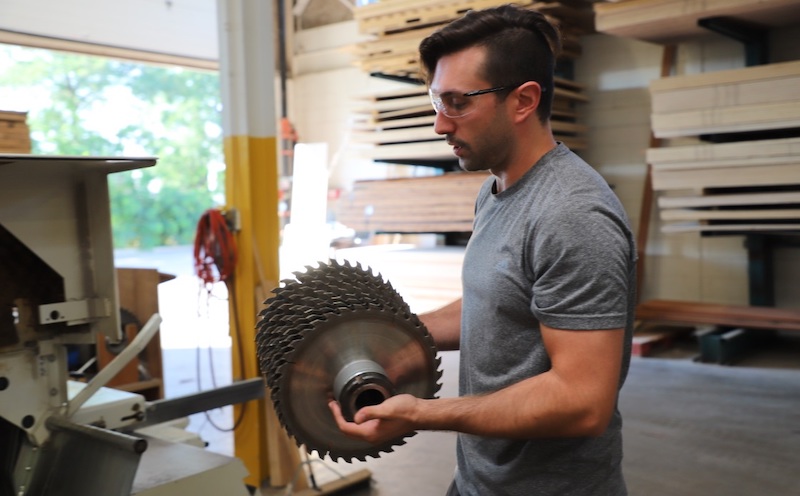
Next stop for any given piece of wood may the router to carve grooves, or planers to smooth rough surfaces, or the crown moulding machine which whirls five knives at once. I’m in charge of all these early-stage wood processors including the Pushfeed OptiCut S 50 which is a programmable saw that lets me dial-in the exact dimensions drafted by the designers.
On average, Rosehill Wine Cellars consumes between 2000 to 4000 board feet of high-quality hardwood per month. The material comes to us as rough timber, kiln dried but unstained and untreated. We use Canadian product wherever possible, but some species are imported from the United States and our sapele comes from West Africa. Mahogany makes an equally long trek from the Far East, but we work mostly with walnut, maple, oak, beech, and redwood. Those are the hardwoods best suited to wooden wine racks because they absorb vibrations, hold their shape in humid conditions and they have no aroma which could impact the taste of wine.
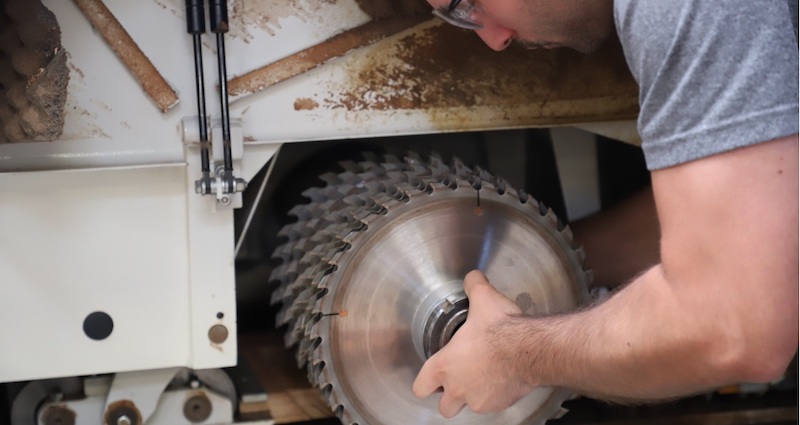
Making custom wine cellars also requires whole skids of Baltic birch plywood, buckets of wood glue and water base stain, and rolls and rolls of veneer edging, not to mention boxes of screws, slides, and Euro hinges. We also require LED lights, copper wiring, uncut-glass, and beeswax.
Once the solidwood has been shaped to the required lengths and widths and routed as necessary, the pieces leave my station and advance to the assembly phase. Senior cabinetmakers with many years more experience than myself follow detailed plans to glue and screw the parts together as wall cabinets and wine racks. Last are the finishing touches which usually include staining, lacquering, or waxing certain woods. Lights and glass are installed where necessary, and the pieces are wrapped for transport. Rosehill has another team which works offsite preparing and installing wine racks in residential homes and businesses.

At the end of the day, it’s very satisfying to put product on the shelf and trust me it’s even better when you build the actual shelf.
All Photos by Jay Kana 03 Aug 2021